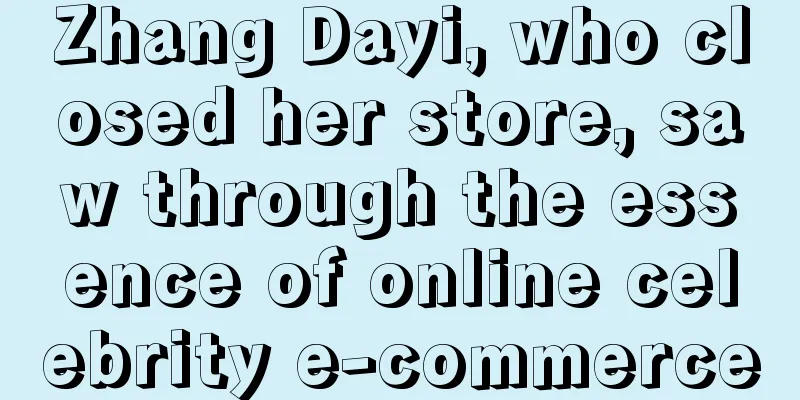The inside story of JD.com's 10 billion yuan subsidy: 1 hour of secret training, free shipping for 9.9 yuan, the first shot will be fired on March 1

"The internal group has been notified that JD.com will launch new marketing activities such as 10 billion subsidies, 9.9 free shipping, and single product flash sales." A hardware merchant said and sent a screenshot to Yibang. The news that JD.com is about to launch a 10 billion subsidy channel has aroused strong attention in the e-commerce industry. Yibang learned from many merchants that JD.com has conducted multiple rounds of "rigorous" communication with merchants. "JD.com's industry clerk not only discussed the 10 billion yuan subsidy with us alone, but should have talked to all the merchants about it." According to a purchasing and marketing staff of a certain brand who attended the JD.com meeting, promotional content related to the 10 billion yuan subsidy is not allowed to be photographed or spread. Just a few days ago, JD.com conducted a live broadcast training for merchants regarding the 10 billion yuan subsidy. Before the training began, official staff also emphasized that screenshots were prohibited. On February 21, JD.com publicly released the "Double Compensation for Expensive Purchases" service rules, which state that if consumers purchase products with relevant logos on the platform and the price they actually pay is higher than the price of the same product on a specific platform, they can apply for double compensation for the difference in the actual amount paid for the order. It is worth noting that the "specific platforms" in the rules specifically mention Pinduoduo's 10 billion yuan subsidy and Tmall (including websites, apps, WeChat public accounts, WeChat malls and mini-programs, etc.). Various signs and actions indicate that the "only basic weapon in the future" that Liu Qiangdong emphasized internally at the end of last year - low price - will once again demonstrate its "power". After so many years, will the e-commerce world trigger a new round of price storm? 1. JD.com’s determination: “Knife-shaped” daily sales “buy at a high price and pay”According to Yibang's investigation, the 10 billion subsidy, which will be launched as an independent channel on March 1, is positioned by JD.com as a "low-price-minded daily sales channel". Its main customer base is users who have a clear demand for big-name standard products and are price-sensitive. According to reports, the bidding model for JD.com's 10 billion yuan subsidy is an open bidding. After the platform issues the bid in the background, self-operated and POP merchants participate in the bidding in a "blind bid" form. The platform will set the highest starting price and starting inventory. Merchants' bids cannot be higher than the highest bidding price, and the bidding quantity cannot be lower than the starting inventory. The lowest bidder wins. If the bidding prices are the same, the platform will focus on the inventory situation. It is reported that in the first phase of the 10 billion yuan subsidy that is about to begin, merchants cannot add inventory, and related functions will be added after iteration. "In terms of the conditions that need to be met to win the bid, the core point is whether your price competitiveness is the lowest in the entire network." Merchants attending the meeting said that the core benchmarks of "Buy Expensively and Compensate" include all the mainstream e-commerce platforms that can be imagined in the current market, "This is the core factor for winning the bid." (Screenshot of live training) In this one-hour training session, the Q&A session took up 41 minutes. It can be seen that merchants are very enthusiastic about the "10 billion subsidies". The issues that merchants are concerned about include deduction points, winning conditions, whether shipping is free, participation threshold, traffic support, etc. It is reported that at present, the deduction rate for most categories of POP is 0.6%, and there is no relevant policy for self-operated. The platform has not yet set corresponding pit fees and pit production requirements. "Don't worry about traffic." The merchant said that JD.com promised to present it as an independent entrance in the core channel area of the homepage, and at the same time provide exposure in the search and promotion field, highlighting the three core interest points of "official subsidies", "compensation for overpriced purchases", and "free shipping for the entire store". After the "double compensation for overpriced purchases" rule was officially released on the 21st, it was placed in a more important position by JD.com and will soon participate in JD.com's 3.8 Festival as an important gameplay. "The top merchants are very interested in the 10 billion yuan subsidy, which is to establish a user mindset. Especially when buying large items or large home appliances, users still have a strong mindset on JD.com." A mid-level merchant believes that "launching a series of low-price strategies before the 3.8 holiday is equivalent to a good start for JD.com in the new year. The 3.8 promotion is the first important event in the e-commerce field, and the e-commerce market has become hot since then." According to the merchants, the waiters have been communicating with the merchants, hoping to put new products with the best value for money on the shelves. "Our store usually has a customer spending of over a thousand yuan, but now they want us to sell products for 99 to 199 yuan in the new store." Some industry insiders also questioned: "JD.com has finally maintained its quality service over the past few years, and its average customer spending has increased. Why is it suddenly engaging in a 'price war'?" 2. The “foreshadowing” was laid in 2012The 10 billion subsidy is an effective means for the e-commerce industry to stimulate users with price, achieve new platform users and GMV growth. Previously, it only appeared on JD.com as an activity during key marketing nodes such as Double 11. JD.com Special Edition and Jingxi have released rules for the super 10 billion subsidy activity. However, Jingxi's 10 billion yuan subsidy did not adopt a bidding model. Instead, merchants set up group buying activities, and then according to the number of valid orders reached at the agreed price during the event, Jingdong subsidized the merchants in stages with marketing expenses. In the first half of 2022, JD.com split the Jingxi business group. According to insiders, Jingxi was once a business led by Liu Qiangdong himself. And Liu Qiangdong himself has always been accustomed to playing the role of "price killer" in the consumer market. Since 2010, JD.com has proactively provoked price wars for three consecutive years. In the first two years, it "declared war" on Dangdang, and in 2012 it launched the "815 price war" against Suning. In the process of competing with Dangdang in the book category, Liu Qiangdong directly called out: the price of each book must be 20% cheaper than that of competitors. "If you make a penny of gross profit for the company within three years, or a penny of net profit within five years, I will fire all your department staff!" The price war between JD.com and Suning in the home appliance sector is a textbook example in the history of e-commerce business wars. Liu Qiangdong's three Weibo live broadcasts directly hit Suning's stock price. "Only large appliances have enough room for price wars, and if you want to fight, you have to reduce prices by hundreds of yuan." Then, 5,000 price intelligence agents from Gome and Suning were recruited to track prices at Suning stores every day, forcing Suning to follow suit. This was the first time that e-commerce challenged traditional retail giants, and it was once regarded as a good story in the industry. At that time, a netizen asked Liu Qiangdong: "Brother Dong, what criteria do you use to measure whether this price war is a victory?" Liu Qiangdong replied that it is impossible to determine the winner in a one-day war, and the winner will be determined after three years. Three years later, Suning's operating income was 135.676 billion yuan, surpassed by JD.com's 181.3 billion yuan. The latter's annual core transaction volume (GMV) also soared to 446.5 billion yuan, a year-on-year increase of 84%. It has completely established its status as the leader of self-operated e-commerce. If you think carefully, every high-profile entry by Liu Qiangdong seems to be aimed at experience and price. "The price war will never end" "When I attack my opponents, I always compete with them in terms of price and user experience." Liu Qiangdong's words in 2012 seemed to be a foreshadowing before his return to JD.com at the end of 2022. Ten years later, Liu Qiangdong criticized senior executives for deviating from the core of the business strategy, namely cost, efficiency and experience. In Liu Qiangdong's view, low price is "1", quality and service are two "0s". If the low price advantage is lost, all other so-called competitive advantages will be reduced to zero. At the beginning of 2023, JD.com's 3C categories once again saw price reductions of "hundreds of yuan". The effect of price competition is obvious. As an authorized Apple dealer, JD.com offers an 800 yuan discount online for the iPhone 14 Pro series. Data shows that on the first day of the event, the sales volume of the iPhone 14 Pro series on JD.com increased five times on average compared to the day before the price cut. 3. In addition to price competitiveness, what else can the 10 billion yuan subsidy bring to JD.com?The 10 billion yuan subsidy has established recognition in the minds of users with hard currency such as iPhones and beauty brands. However, after experiencing 2022, brand companies will be more cautious in putting profits first. This has also made more e-commerce practitioners rethink the value and significance of price wars to the retail consumer industry. Some maternal and infant merchants said that the ROI performance of fast-moving consumer goods will be more eye-catching in the 10 billion yuan subsidy. However, not every category can achieve the expected effect. "Low-price competition must be based on cost advantages." The above-mentioned merchant pointed out that most consumer goods companies today are facing the challenge of rising costs of raw materials, manpower and material resources. Therefore, whether to sacrifice profits for tens of billions of subsidies requires careful consideration. The 10 billion yuan subsidy may be more suitable for brands that need to create hits and hope to reach the public through the platform. For these brands, they need to focus on product portfolio. "After the whole batch of goods, it is necessary to attract enough attention and make enough profit." Today, the low-price competition between platforms is more like a "war for talent." In 2019, Pinduoduo relied on the "10 billion subsidies" to increase the number of daily active users of this first-level entrance to 100 million, thereby driving the active participation of 2,800 domestic and foreign brands. JD.com previously released data showing that during the 618 period in 2022, new users in the lower-tier markets accounted for 67%. According to QuestMobile's "2022 China Mobile Internet Annual Report", in China's mobile Internet, users over 51 years old accounted for 26.4%; users in third-tier and lower cities accounted for 60.6%. This group of people may be the growth that JD.com hopes to find. In the table of "Usage time of mobile internet giants' apps" in this report, Tencent, Douyin, Kuaishou, Baidu, and Alibaba ranked in the top five, but JD.com was not mentioned. In addition, a report from CITIC Securities showed that in March 2022 (a year ago), the number of daily active users of Taobao Mobile, Pinduoduo, and JD.com were 337 million, 240 million, and 85 million, respectively. JD.com still has room for improvement. After hundreds of billions in subsidies, can JD.com achieve its goal? Author: Zheng Ya; Editor: Shi Hangqian Source public account: Yibang Power (ID: iebrun), eliminating all e-commerce knowledge gaps. |
<<: Talk about the changes in commercial bank retail business and private domain practices
>>: My experience of missing five opportunities to make money from self-media
Recommend
Mixue Ice City = Xiangpiaopiao plus+
In today's increasingly fierce competition in ...
How to enter Amazon North America? Which countries are included in Amazon North America?
As one of the world's largest e-commerce platf...
How does Lao Xiang Ji master marketing?
Lao Xiang Ji's "earthy marketing" is...
How much is the qualified Amazon IPI? How to calculate IPI?
Amazon IPI stands for Inventory Performance Index,...
Big models have big price cuts! Byte, Alibaba, Baidu and Tencent take the lead in opening the book!
In the past week, major model manufacturers have a...
Samsung's new ad contains hints about Apple, is this competitive promotion always effective?
This article specifically introduces the business ...
Don’t let sales ruin the brand you worked so hard to build!
In the journey of brand building, short-term sales...
Live-streaming recruitment is hot, but chaos is frequent
Graduation season is here again, and livestreaming...
How to recover a stolen Shopee store? What to do if the account is frozen?
If the Shopee account is set up too simply, the st...
Can the materials before Shopee's re-entry still be used? What are the requirements?
To open a store on Shopee, you need to submit a se...
What is the Amazon sku naming rule? What does the Amazon sku code mean?
Merchants who open stores on Amazon need to do pro...
Is Amazon Global Shopping reliable? What are the advantages?
Nowadays, when people buy some foreign brands and ...
Can Amazon Prime be cancelled? What is the use of Amazon Prime?
Amazon Prime is actually the same as JD Plus membe...
Amazon US changes its automatic inventory removal policy
Amazon's US site announced that in order to ma...
What is the end point of the e-commerce war?
In recent years, the e-commerce industry has matur...









